| Vintage Pulp | Dec 9 2019 |

Dispatch, this is truck 9. I'm stopping to help a stranded driver. And she's got a furry little animal that's loose too.

This print is called “Unexpected Letdown,” and the title reflects the idea that the car slipped off the jack, the woman was startled, and her panties fell down. This concept is most associated with paintings by artists like Art Frahm and Jay Scott Pike, though others did it too. The idea apparently was so popular that the always opportunistic A. Fox Corporation (here credited as Copr. A Fox) produced the photographic variation you see here, starring a mortified (and unidentified) model losing her unmentionables. Luckily for her a tow truck driver is on the scene to help her jack her car back up—and her panties too, if she'll let him. This dates from 1966.


| Vintage Pulp | Jan 5 2019 |

Upon close inspection everything looks ship shape.

Model and actress Mara Corday, née Marilyn Watts, captains this nautical 1953 Corp. A. Fox Technicolor lithograph. Corday is one of those vintage actresses who has a cult following today, which in her case mainly derives from starring in three cheesy sci-fi films—Tarantula, The Giant Claw, and The Black Scorpion. She also appeared in some thrillers and noirs, but her stardom was truly cemented when she was Playboy magazine's Playmate of the Month for October 1958. That centerfold may be one of the most demure the magazine ever published, but the issue sold well, owing to Corday's status as an established movie star. She's still with us at age eighty-eight, and these images are nice mementos from a time when legions of fans were willing to sail anywhere with her.
| Vintage Pulp | Nov 30 2018 |

She has your grandma's hair, but the similarities end there.
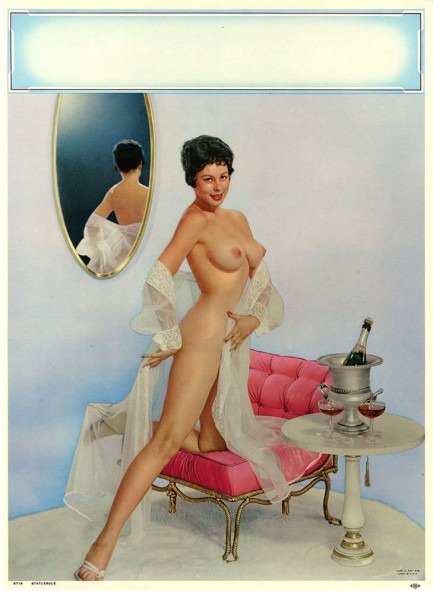
One of your older relatives definitely sports this look. We mean from the neck up. In 1959, when this Corp. A. Fox Technicolor lithograph was made, short hair was the rage and remains so for women of this era that are now senior citizens. There's nothing senior about the rest of this model, though. We're unable to identify her, but we suspect she was at least semi-famous. A. Fox models often were. If you recognize her drop us a line.
| Vintage Pulp | May 4 2018 |

When you toast them the aroma is mouthwatering.
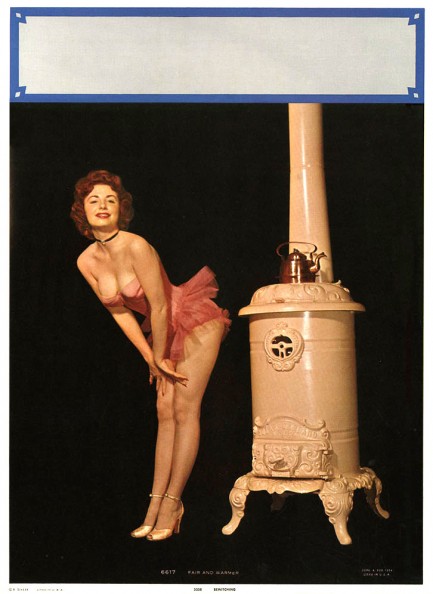
Since we neglected to share any Technicolor lithographs for several months before we got back to them recently, here's another one close on that one's heels entitled “Fair and Warmer,” from A. Fox Corp., circa 1955, with an unidentified model. We've wondered in the past whether a single ass comprised one bun or two buns. For example, should our header be “bun warmer” or “buns warmer”? It's a subject that requires deep exploration, and we've already put substantial thought into it.
| Hollywoodland | Apr 24 2018 |

A Dors of a different color.
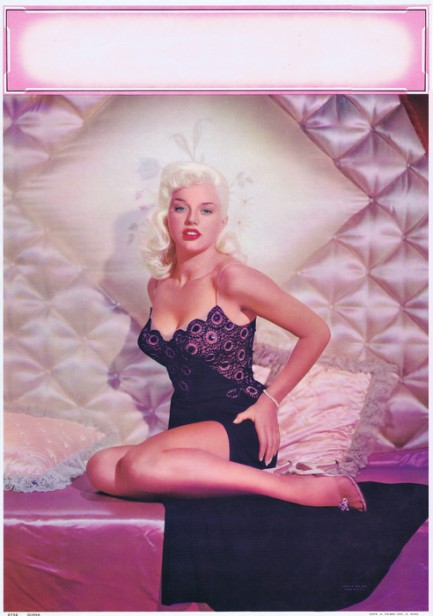
Diana Dors is the star of the above Technicolor lithograph, which was tinted pink for fun by the vendors at Corp. A. Fox, an outfit that churned out thousands of similar prints during the mid-century period. They picked up the images wherever they were able, and this one was originally made as a promo for the 1957 film noir The Unholy Wife, without the garish pink tinge. Dors had already been in movies for ten years, so she wasn't actually a new box office figure, as the promo declares, but maybe she was newish to U.S. audiences. The photo was also sold as a horizontally oriented lithograph, again without the overdone blush, also below. You can see a couple dozen more prints featuring various known and unknown models from A. Fox and other litho companies by clicking the keywords at bottom. We also shared a Dors litho from 1964, which you can see here. And you can read about The Unholy Wife here.

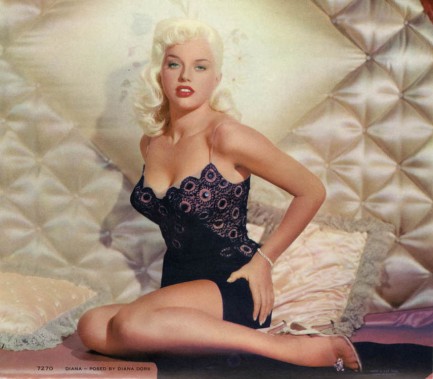
| Vintage Pulp | May 14 2017 |

First you need my shirt, now my pants? I believe you when you say we'll go faster. My question is faster at what?

| Vintage Pulp | Apr 16 2017 |

They say less is more, but in this case more is less.
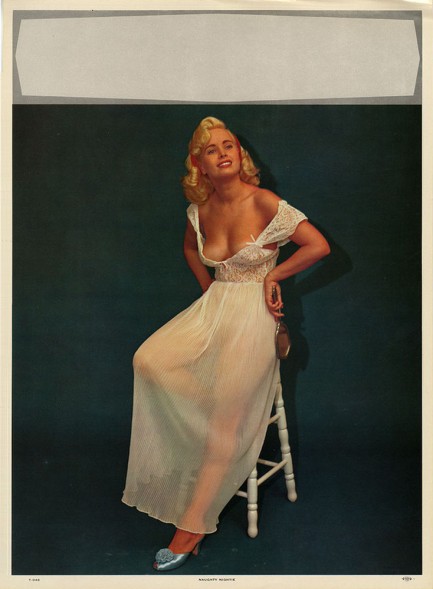
Our ongoing exploration of mid-century Technicolor lithographs continues with this nice image from A. Fox featuring an unknown model in lingerie that simultaneously covers nearly her entire body yet is sheer enough to show nearly everything. The image is titled “Naughty Nightie” and it dates from around 1960. If you want to see dozens more of these just click the appropriate keywords below.
| Vintage Pulp | Sep 3 2016 |

Bad news: the dye job was expensive. Good news: she has the same hair color today for free.


An unidentified model appears above on two 1965 Technicolor lithographs, the first of which, from A. Fox Corp., is called “How Nice,” and the second of which, from KLM, is called “Silver Siren.” The model sports striking silver hair in both, and we've noticed this trend has gotten pretty big of late, so these serve as a reminder that, once again, your grandmother beat you to it.
| Vintage Pulp | Jan 26 2016 |

The woods are lovely, dark, and deep.
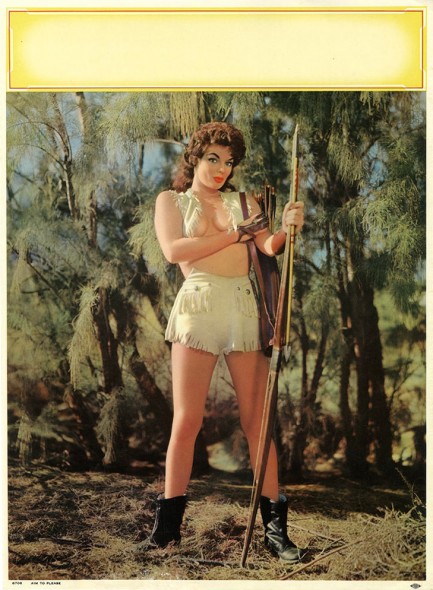
Above, a Technicolor lithograph, entitled “Aim To Please,” starring Playboy model Mariyln Hanold looking for something to kill with her longbow and quiver of arrows. Does she look familiar? Possibly it's because we featured her before, from a similar looking woodland session. This is dated 1959 and comes from Corp. A. Fox.
| Vintage Pulp | Nov 1 2015 |

A touch of velvet.

Above is a Technicolor lithograph from Corp. A. Fox, aka A. Fox Corp., of an unknown model posing on a comfy looking velvet sofa. The image is titled “Captivating” and dates from 1969. As always, if you recognize the model drop us a line, because we don’t. See more Technicolor lithographs at this link.





































































